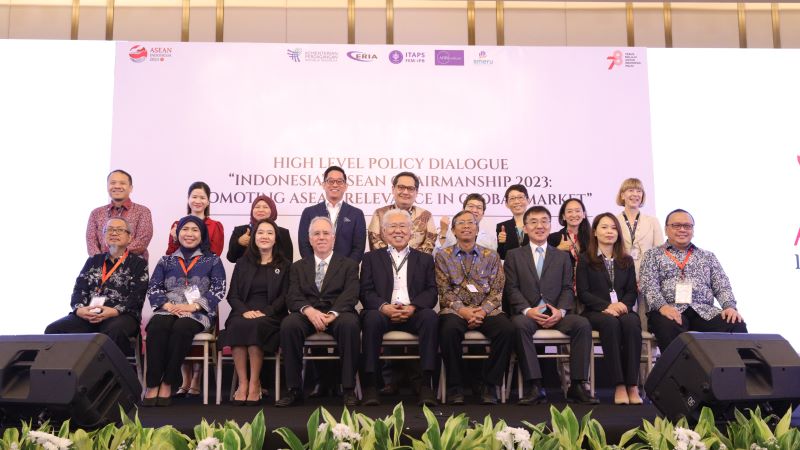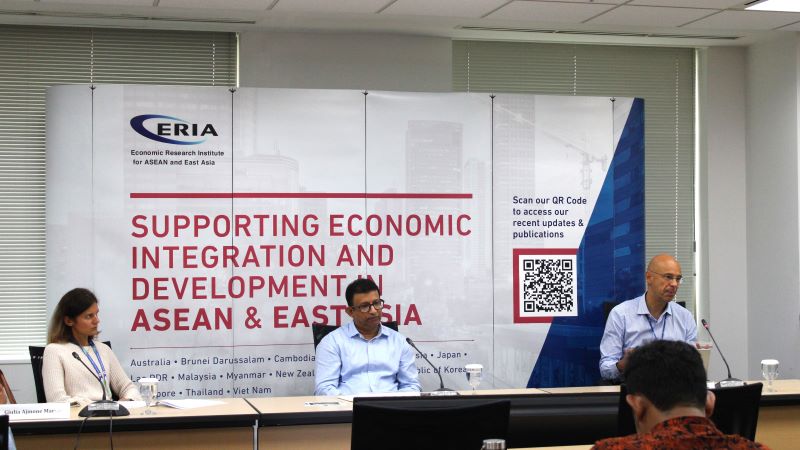Select All
A. Ali Mashduqi
Abdul Hafizh Mohd Azam
Abhishek Kumar
Abror Tegar Pradana
Abubakari Ahmed
Achmad Solikin
Adarsh Kumar Singh
Adeeba Kamarulzaman
Adelia Rahmawati
Adinda Soerono
Adli Hazmi
Afifah Patriani
Agung Haris Setiawan
Agusta Rizar Binadja
Ahmad Arif Tonang
Ahsan Senan
Airlangga Hartarto
Aishah Hatta
Akhmad Zainal Abidin
Akihiro Kimura
Akira Matsumoto
Akira Takamine
Aktiva Primananda Hadiarta
Aladdin Rillo
Alay Phonvisay
Albert Sanghoon Park
Alex Zapantis
Alexander Jaax
Alexander Ryota Keeley
Alfin Frans Nainggolan
Alicia Garcia Herrero
Allison Sanders
Alloysius Joko Purwanto
Aloun Phonvisay
Amanda Archangela
Amar Hisham Jaaffar
Amriza Nitra Wardani
Andin Hadiyanto
Andre Permana
Andrzej Cieslik
Anika Widiana
Anita Prakash
Anna Maria Rosario D. Robeniol
Anna Srutt
Annisa Nadhilah Utoro
Anoulak Kittikhoun
Anousak Phongsavath
Antonio Fredelindo Dela Resma Villanueva
Anzika
Apra Sinha
Araba Sey
Aravinda Meera Guntupalli
Archana Srivastava
Archanun Kohpaiboon
Ardhana Tahriza Syarif
Ari Aji Cahyono
Arunee Tanvisuth
Arvin Imamsatria Widijanto
Arya Swarnata
ASEAN Centre for Energy
ASEAN Coordinating Committee on Micro, Small, and Medium Enterprises (ACCMSME)
Asha Sundaram
Ashling Cashmore
Ashri Nadia
Asia Miscolayati Hasanah
Asnawi Kamis
Asuka Nagatani
Aswatini Raharto
ATF Study Group
Atika Mutiara Insani
Atul Kumar
Auditya Firza Saputra
Aulia Salsabella Suwarno
Aulia Ulfatunnisa
Ayako Mizuno
Ayako Obashi
Ayami Saimura
Ayu Pratiwi Muyasyaroh
Badri Narayan Rath
Badrul Munir
Basuki Hadimuljono
Ben Czapnik
Ben Shepherd
Bernard Hoekman
Bernardene Smith
Bhavesh Garg
Bhupendra Kumar Singh
Bhushan Praveen Jangam
Bin Ni
Boediarso Teguh Widodo
Budhi Setiawan
C.T. Vidya
Caitlin Allen Whitehead
Calista Endrina Dewi
Candra Fajri Ananda
Canyon Keanu Can
Cassey Lee
Cecilia V. Reyes
Cecilya Malik
Celine Kusnadi
Chandra Kusuma
Chandra T. Putra
Charles Christmann
Chatarina Sri Prapti Jektiningsih
Chayodom Sabhasri
Chen Liu
Chien-Chiang Lee
Chika Hamasaki
Chin Hee Hahn
Chinmaya Behera
Chintya Pramasanti
Chisa Uhira
Chokephaibulkit Kulkanya
Chris Consoli
Christian Joy P. Cruz
Christoforus Adri Pieter Koleangan
Christopher Findlay
Christopher L. Hardesty
Chunjie Yang
Citra Endah Nur Setyawati
Citra Mira Dewi Boonastria
Clara E. Gillispie
Clara Gillispie
Cornelis Deda
Cuong Viet Nguyen
Cynthia Eka Wahyuni
Daisuke Kiuchi
Daisuke Nakayama
Dani Rodrik
Dania Salsabila
Danupon Ariyasajjakorn
Darwin Trisna Djajawinata
Davanhny Xaneth
David Christian
David de Villiers
David Martínez Turégano
Debanka Samanta
Dega Putra Ward
Della Temenggung
Deni Ferdian
Deni Friawan
Denisa Athallia
Denise Penello Rial
Department of Energy Policy and Planning, Ministry of Energy and Mines, Lao PDR
Department of Energy, Brunei Darussalam
Derek Gill
Dian Ayu Aryani
Dian Handayani
Dian Lutfiana
Diep Phan
Dionisius A. Narjoko
Dmitry Grozoubinski
Do Thi Thu Trang
Doan Thi Thanh Ha
Donah Baracol Pinhão
Dongmin Kong
Dr. Surasit Tanthadiloke
Duangjai Lorthanavanich
Duc Anh Dang
Eko Yulianto
Elitua Simarmata
Elsa Noviani
Elvira Andriyani
Ema Ogura
Emi Kojin
Endo Seiya
Eri Hariyanto
Eri Yoga Sidharta
ERIA
ERIA Asia Zero Emission Center
ERIA CAPD Research
ERIA Digital Innovation and Sustainable Economy Centre (E-DISC)
ERIA Healthcare Unit
ERIA Study Team
Eric Williams
Erizqa Mahardhika
Ernawati Munadi
Erniel B. Barrios
Errol Pinto
Estiana Cahyawati
Estika Ellizar
Etsuyo Michida
Evelyn Shyamala Devadason
Evi Fitriani
F. Dian Ardi Wulandari
Fachry Abdul
Fahmi Syamhudi
Fairuz Suzana Mohd Chachuli
Fangchia Lee
Farhad Taghizadeh-Hesary
Farzan Yahya
Farzana Munshi
Fatimah
Fauziah Zen
Fikri Adib Rianto
Firman Bunyamin
Fithra Faisal Hastiadi
Fitri Astari Asril
Frizolla Putri
Fusanori Iwasaki
Gary Hawke
Gazi Salah Uddin
GCCSI
Gema Satria Mayang Sedyadi
Gene Grossman
Georgios Dimitropoulos
Gerhard Kling
Giulia Ajmone Marsan
Gordon Hanson
Grace Hadiwidjaja
Grace T. Cruz
Grace Tjen
Gracia Hadiwidjaja
Gufra Ramadhana
Günther G. Schulze
Hadinah Yahaya
Haekal Akbar Kartasasmita
Hafis Pratama Rendra Graha
Hafiz Mirza
Hai-Anh H. Dang
Hal Hill
Halim Alamsyah
Han Phoumin
Handayani
Haris Zuan
Haroon Bhorat
Haruka Sakamoto
Haruyo Nakamura
Heang Theangseng
Hein Roelfsema
Henry Gao
Hersinta
Heru Wibowo
Hideaki Obane
Hideo Kobayashi
Hideo Yasunaga
Hidetoshi Nishimura
Hien Dang
Hien Dieu Thi Dang
Hilmy Prilliadi
Hiroaki Ishiwata
Hirokazu Kobayashi
Hiroki Kaneko
Hiroki Kudo
Hiroki Yoshida
Hiroko Nakamura
Hiroshi Hashimoto
Hiroshi Ishikawa
Hiroshi Suzuki
Hiroyasu Shiozu
Hisashi Yoshikawa
Hisaya Oda
Hitoshi Nishimura
Hoang Minh Giang
Hoang-Nam Vu
Homi Kharas
Hongyong Zhang
Hoyyen Chan
Hui Li
Huong Le Thu
Huong-Giang Pham
Huy Quynh Nguyen
I Gusti Suarnaya Sidemen
I Kadek Dian Sutrisna Artha
Ian Coxhead
Ian Havercroft
Ichiro Kutani
Ikarii Ryohei
Ikumo Isono
Imam Pambagyo
Indradhi Faisal Ibrahim
Inge Mayeres
Inkyo Cheong
Inpaeng Sayvaya
Intan Murnira Ramli
Irene Juitania
Irma Johanna Mosquera Valderrama
Irvan Wicaksono
Irvan Yusirman
Isabella Italia
Isabella Italia Gentajaya
Isabelle Antunès
Isabelle Durrant
Ishac Diwan
Ivana Suradja
Jane Kelsey
Jason Grant Allen
Jay Rafi
Jazreen Jefri
Jeane Budhi
Jeconiah K. Boongaling
Jeremy Gross
Jesicca Wa'u
Jia Zhao
Jianjun Yan
Jianping Zhang
Joey Minervini
John Walsh
Joko Widodo
Jon D.Lindborg
Jong-in Sun
Joni Jupesta
Jose Andres F. Ignacio
José Antonio Ocampo
Jose Ma. Luis P. Montesclaros
Joseph Wira Koesnaidi
Josephine Nagallo
Ju Hyun Pyun
Juita Mohamad
Julia Tijaja
Julien Chaisse
Jun Arima
June Charoenseang
Jung Hur
Jungran Cho
Junianto James Losari
Junichi Ogasawara
Junji Nakagawa
Justin Yifu Lin
Juthathip Jongwanich
K.M. Arefin Kamal
K.P. Prabheesh
Kalamullah Ramli
Kaliappa Kalirajan
Kaori Tsubohara
Kaoru Nabeshima
Kavi Chongkittavorn
Kazuaki Uda
Kazuhiko Ono
Kazuhiro Yaginuma
Kazuhisa Takemura
Kazuki Yamamoto
Kazunobu Hayakawa
Kazuo Hoshino
Keerti Mallela
Kei Shimogori
Keigo Akimoto
Keita Katayama
Keita Oikawa
Kemala Febrihadini
Ken Itakura
Kenji Kimura
Kenta Goto
Kentaro Yamada
Kentaro Hayashi
Kentaro Machii
Kentaro Noma
Kento Komatsubara
Ketan Reddy
Khoirunurrofik
Kiki Verico
Kikuko Shinchi
Kim Geok Soh
Kim Lam Soh
Klarriness P. Tanalgo
Koh Wee Chian
Koichi Sasaki
Koji Fujimoto
Koji Ida
Koki Akabane
Koko Inarto
Komal Biswal
Kongchheng Poch
Korea Institute for International Economic Policy
Kozo Kiyota
Kumiko Horiba
Kunhyui Kim
Kuniyuki Nishimura
Kuriko Otsuka
Kyung-Jin Boo
Lai Van Manh
Laksmita Dwi Hersaputri
Lalu Hendry Yujana
Lam Kim Seong
Lao Premier International Law Office Company
Le Thanh Sang
LEMIGAS Ministry of Energy and Mineral Resources Indonesia
Leng Soklong
Leo Angelo L. Ocampo
Leong Siew Meng
Liem Nguyen
Lili Yan Ing
Lilibeth T. Morales
Lilis Heri Mis Cicih
Lina Maulidina Sabrina
Low Zhen Ting
Luk Chau Beng
Luki Safriana
Lurong Chen
Ly Thim
Lynette Lee Corporal-Penman
M. Chatib Basri
M. Yudhistira Halley
Ma. Reinaruth D. Carlos
Maekawa Kiminori
Maharani Pradani
Mahdi Ghodsi
Mahirah Mahusin
Mai Fujita
Mai Yagishita
Makoto Ikeda
Malik Cahyadin
Maman Suhendra
Manami Ohishi
Manami Uechi
Maria Karlene Shawn I. Cabaraban
Maria Monica Wihardja
Maria Paz N. Marquez
Maria Vásquez Callo-Müller
Mark Ryan B. Paguirigan
Martin Richardson
Martin Schröder
Masaharu Yogo
Masahito Ambashi
Masakazu Toyoda
Masaki Nishio
Masami Iwai
Masanori Kozono
Masaru Kawachino
Masashi Sakamoto
Masaya Shiraishi
Matteo Fiorini
Matthew LoCastro
Matthew Loughrey
Maurice Obstfeld
Max bulakvskiy
Md Lutfur Rahman
Medical Excellence Japan
Megawati
Meiyanti Widyaningrum
Melanie S. Milo
Mely Caballero-Anthony
Mengxu Xiong
Mia Mikic
Miaojie Yu
Michael Dioha
Michelle Chandra Kasih
Michikazu Kojima
Mie Oba
Mihoko Nakayama
Mika Goto
Mike Webb
Militcyano Sapulette
Mima Sefrina
Mingcong Li
Mini P. Thomas
Ministry of Energy, Brunei Darussalam
Ministry of Industry of the Republic of Indonesia
Ministry of Mines and Energy, Government of Cambodia
Ministry of Mines and Energy, Lao PDR
Mirra Burri
Mirrah Nabighah
Misako Higashijima
Mita Noveria
Mitsuru Motokura
Mitsuyo Ando
Mizue Dobashi
Mohamad Izahar Mohamad Izham
Mohammad Windu Darmawan
Mongolian Energy Economic Institute
Mongolian Energy Economics Institute
Motjaba Seyyedi
Motonori Tsuno
Motoo Furuta
Muchamad Muchtar
Mudhya Razanne Tiara
Muhammad Faliq Abd Razak
Muhammad Indra Wahyudin
Muhammad Luqmanul Hakim
Muhammad Raihan Ramadhan
Muhammad Rias K.V. Zainuddin
Muhammad Ridho
Muhammad Suryanegara
Murakami Kazuyuki
Nabeela Raji
Nadira Melia
Nadiya Pranindita
Najjahul Imtihan
Nalinee Tantuvanit
Nanako Tamiya
Nanda Sucitra Putri
Naoko Doi
Naomi Hatsukano
Naoto Okura
Naoyuki Haraoka
Naparit Chantawasinkul
Narihiro Hirai
Narumol Nirathron
Natasya Dewi Shafira
Natcha Yongphiphatwong
Nathapornpan Piyaareekul Uttama
National Research and Innovation Agency (BRIN)
Nattapong Puttanapong
Ngoc Anh Tran
Ngoc-bao Pham
Ngov Penghuy
Ngu Wah Win
Nguyen Anh Duong
Nguyen Cong Vu
Nguyen Dinh Tuan Vuong
Nguyen Minh Bao
Nguyen Ngoc Toai
Nguyen Thi Xuan Thuy
Niche Evandani
Nicola Crosta
Nobuaki Yamashita
Nobuhiro Aizawa
Nomura Research Institute India Pvt. Ltd.
Nomura Research Institute Singapore
Noor Cholis Madjid
Noor Raida Abd Rahman
Nopadol Rompho
Nor Salwati Othman
Norasikin Ahmad Ludin
Norio Ohmagari
Nugroho Christian
Nuki Agya Utama
Nur Hendrastuti
Nurfarhana Alyssa Ahmad Affandi
Nuttawut Laksanapanyakul
Nuwong Chollacoop
OECD
Oil and Gas Planning Department, Ministry of Electricity and Energy of the Republic of the Union of Myanmar
Ong Ching Loon
Osamu Ikeda
Otaka Yasuo
Pa Pa
Patrick Adoba
Paul Collier
Paul Teng
Paulyn Ubial
Pedro Simon
Peeti Ngamprapasom
Peter Drysdale
Peter Warr
Pham Anh Huyen
Phan Thi Thu Hien
Phaysone Phouthonesy
Phetkeo Poumanyvong
Philippe De Lombaerde
Phongsili Soukchalern
Phouphet Kyophilavong
Pierre Sauvé
Pongsacha Chayapong
Prabir De
Premakumara Jagath Dickella Gamaralalage
Priyadarshi Dash
Punpreecha Bhuthong
Putri Alifa
Putti Ananda Hiswi
Putu Sanjiwacika Wibisana
Pyan Amin Muchtar
Qiu Xu Martin Liao
Quang Hoan Truong
Rabindra Nepal
Rachmatunnisya
Radeef Chundakkadan
Rael Sarmeen
Rahayu Susanti
Rajesh Malhotra
Rakesh Kumar Agarwal
Rakesh Padhan
Raktimava Bose
Rambu Raing McCullagh
Ramonette B. Serafica
Rashesh Shrestha
Ratha Kong
Regina Berba
Reiko Hayashi
Renjith G
Reo Kawamura
Ressita Ramadhani
Reth Soeng
Retno Wulandari
Reza Miftahul Ulum
Riatu M. Qibthiyyah
Richard Baldwin
Ridha Aditya Nugraha
Ridwan Dewayanto Rusli
Rina Karlina
Rinni Rodiah Munajatisari
Rizqy Anandhika
Robi Kurniawan
Rohini Nambiar
Romora Edward Sitorus
Rostam J. Neuwirth
Rosyid Bagus Ginanjar Habibi
Rubeena Singh
Rudhian Chlissma Putra
Rudi Iskandar
Rudi Sukandar
Ruengsak Thitirasakul
Rui Augusto Gomes
Ruining Zhang
Rullan Rinaldi
Ruth Anne Gonocruz
Ryan Wiratama Bhaskara
Ryo Chihiro
Ryo Ikebe
Ryohei Ikarii
Ryohei Masumoto
Ryotaro Saito
Ryuhei Sano
S. Irudaya Rajan
Salimah Japar
Salvador Buban
Sanja Samirana Pattnayak
Sanjay Kumar Mangla
Saowaruj Rattanakhamfu
Sara Kingsley
Sarah Krull Abe
Sarah Y. Tong
Sasatra Sudsawasd
Sasidaran Gopalan
Saswata Chaudhury
Satria Mahesya Muhammad
Satya Sivaraman
Saurabh Kumar
Sayo Hosoi
Sebastian Benz
Sebastiao Oliveira
Seema Narayan
Seio Nakajima
Seiya Endo
Selim Cevikel
Septelia Inawati
Setsuo Miyakoshi
Shabbir Gheewala
Shafa Nabilla Haya
Shahrzad Shahi
Shamim Ahmad
Shandre Mugan Thangavelu
Shandre Thangavelu
Shen Zhongyuan
Shigefumi Okumura
Shigeru Suehiro
Shinichi Goto
Shinichirou Morimoto
Shiro Armstrong
Shivakumar Srinivas
Sho Hayashi
Shoichi Ichikawa
Shota Watanabe
Shozo Sakata
Shunsuke Kawagishi
Simon Feeny
Sineenat Sermcheep
Sirichai Koonaphapdeelert
Sisca Rizki Utami
Siti Indati Mustapa
Siti Mustaqimatud Diyanah
Soichi Morimoto
Soichiro Kunihiro
Soo Yeo Kim
Sopheak Meas,
Sophearin Chea,
Sotharith Chap
Sothea Oum
Souknilanh Keola
Sri Milawati Asshagab
Sri Mulyani Indrawati
Sri Suryanovi
Stefan Wesiak
Subash Sasidharan
Sudipta Bose
Suehiro Shigeru
Sufian Jusoh
Suharyati
Suharyati Nugroho
Sumini
Supit Kamalad
Supit Kamklad
Supit Padrem
Surat Teerakapibal
Surhayati
Suryani Eka Wijaya
Susan F. Stone
Susiana Nugraha
Suyono
Suzuka Yoshida
Swe Swe Than
Syarifah Mardhiah Syed Salim
Tadashi Ito
Taiji Furusawa
Takahisa Hiruma
Takao Imanishi
Takashi Ohtani
Takashi Saito
Takayuki Yamanaka
Takehiro Iwata
Takeo Ogawa
Takuma Kato
Takuya Fujita
Tamat Sarmidi
Taty Yuniarti
Teguh Dartanto
Tetsuhi Sonobe
Tetsuo Morikawa
Tetsuya Nomoto
Tetsuya Watanabe
Teuku Riefky
Thach Kao
Thawatchai Palakhamarn
The National Bureau of Asian Research
Thongchart Bowonthumrongchai
Titik Anas
Tohirin
Tomohiko Kobayashi
Tomoko Matsumoto
Tomoko Murakami
Tomy Waskitho
Toshiya Okamura
Toshiyuki Matsuura
Toshiyuki Sakamoto
Tran Dong Phuong
Tran Thi Hue
Tran Van Tho
Tri Mulyaningsih
Tri Wahyuningsih
Trifosa Dimara
Tuan Yuen Kong
Tunggul Mintara Dharma Wirajuda
Tuong-Anh T. Nguyen
Twarath Sutabutr
Ulysses Coulmas
Upalat Korwatanasakul
Usha Iyer-Raniga
Uswa Alhamid
Van Chung Dong
Veerapandian Karthick
Venkatachalam Anbumozhi
Veradika Elsye
Vichien Tantiwisarn
Vicia Sacharissa
Vietnam Academy of Social Sciences, Institute of Sociology
Vivek Anand Asokan
Vo Tri Thanh
Vu Hoang Nam
Vutha Hing
Wahyu Utomo
Wandira Senja Larasati
Warakorn Awutpanyakul
Weerawat Chantanakome
Wempi Saputra
Wenxiao Wang
Widdi Mugijayani
Wilmar Salim
Wongkot Wongsapai
Xianjia Ye
Xueying Jin
Xunpeng Shi
Yamada Fumiko
Yan Wang
Yanfei Li
Yao Li
Yaowateera Achawangku
Yap Lai Peng
Yasser Arafat Usman
Yasuhiko Saito
Yasuhiro Yamada
Yasumitsu Mizobata
Yasuo Kawada
Yasushi Ninomiya
Yasushi Ueki
Yasuyuki Mitsuhashi
Yasuyuki Sawada
Yeri Ryu
Yohei Kato
Yoichi Hiruma
Yoichi Namba
Yoko Konishi
Yolanda Orient
Yose R. Damuri
Yoshiaki Shibata
Yoshikazu Kobayashi
Yoshitaka Watanabe
Yoshitoshi Tanaka
Yosita Hendra Kumala Dewi
Youichi Hiruma
Youngho Chang
Yu Yessi Lesmana
Yugo Nagata
Yuhji Matsuo
Yuika Iwabuchi
Yuji Mizuno
Yuji Okuma
Yuji Tou
Yuka Minagawa
Yuki Higuchi
Yuki Kudoh
Yuko O. Hirano
Yuko Tsujita
Yumika Yoshinaga
Yurika Suzuki
Yusuf Reza Kurniawan
Yusuf Sofiyandi
Yuta Okuyama
Yuting Chen
Zaharin Zulkifli
Zainal Abidin
Zaw Oo
Zhang Yan
Zhihong Yu
Zhong Sheng


